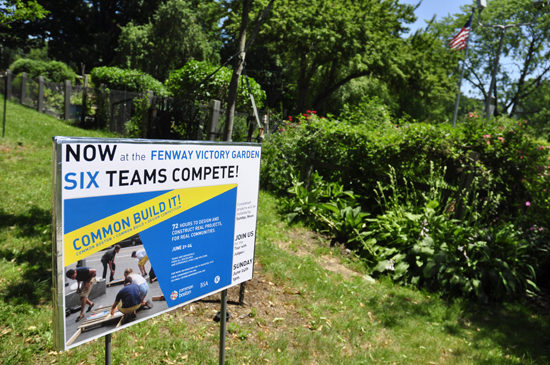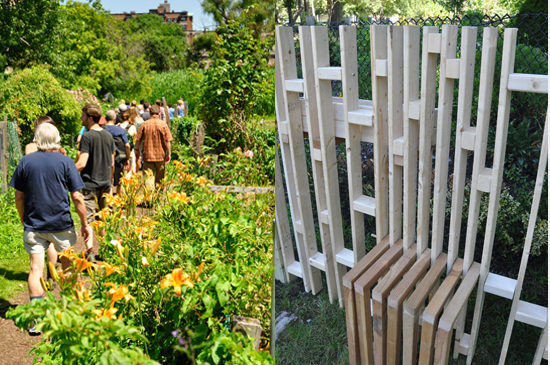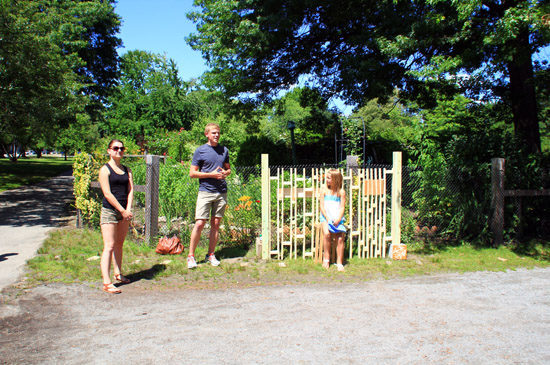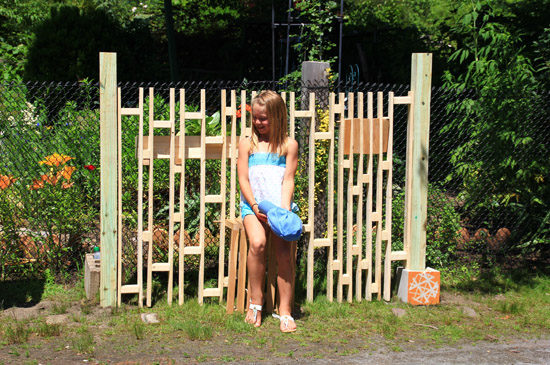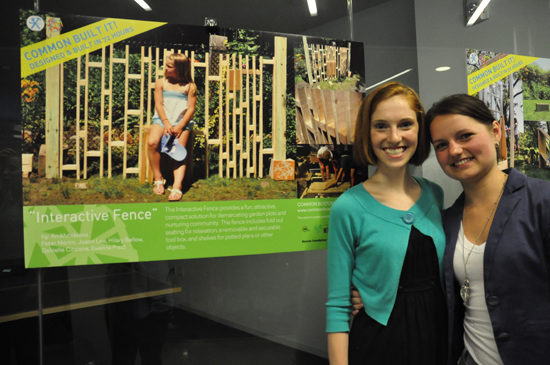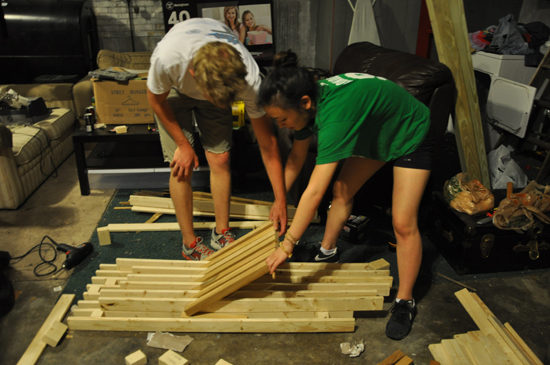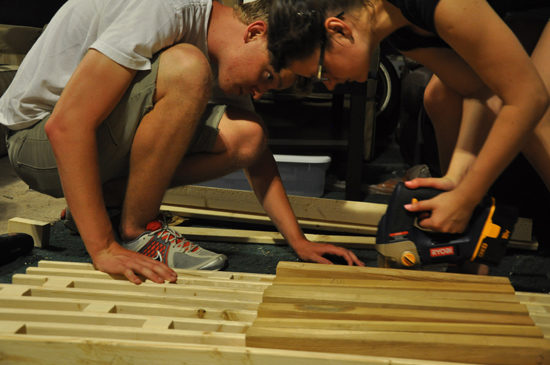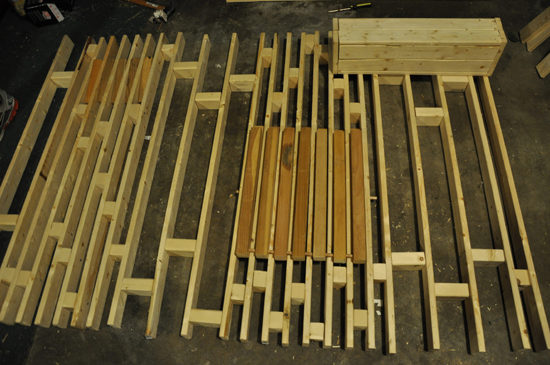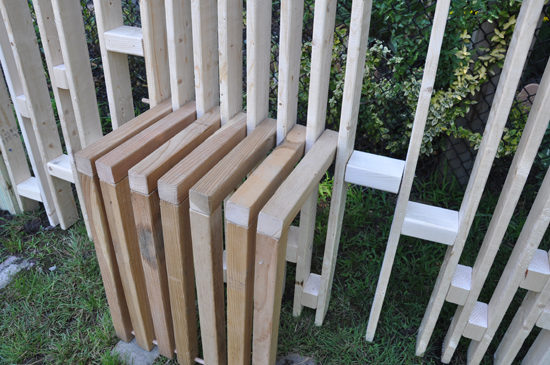What better way for four friends (who happen to all be architects) to spend a weekend together outside of the office and school than by impacting their local community through design? A few of my architecture friends and I participated in the 2012 Common Boston Common Build held June 22-24. The CBCB is a 72 hour design-build competition that invites participants to design and construct an installation that responds to social, economic and environmental issues. This year’s theme “Off the Grid” challenged participants to address issues of place, access, security and neighborhood adjacency within the Fenway Victory Gardens. While the plots of the semi-private victory gardens are located within a corner of Frederick Law Olmstead’s public park most visitors feel as though they are trespassing on private property.
My team intended to break the barrier that exists between the gardeners and the public by creating an interactive fence. We transformed our initial sketch into an operable device that can be personalized and controlled by the gardeners according to their needs. Our desire was for the fence, typically viewed as a barrier, to become a conversation starter by actively engaging the visitor and the gardener. The fence’s unique pattern and textured surface inconspicuously conceals its operable features when not in use. The system integrates a bench, a shelf, and a storage/planter box. The bench can unfold from the fence allowing the visitor a place to sit and converse with the gardener, the gardener can unfold the shelf while gardening to store tools and plants and the gardener also has the option of adding appendages of planter boxes for storage or display. This fence serves as a proto-type for the Fenway Victory Garden’s Fence system and explores the possibility of a public-yet personalized fence which demarcates the Victory Gardens.

The competition’s 72 hour time constraint required us to make a rapid decision about community needs and immediately respond. All it took was a little investigating, brainstorming, sawing, hammering and digging to communicate to the public the space’s potential and, our project, Interactive Fence won the popular vote. While the five other competing teams had completely different ideas, each one’s installation sought to promote awareness in the gardens and reinforce the park’s strong connection to its neighborhood. In three short days the teams addressed signage, security, common spaces, as well material and knowledge exchange. While these installations are not permanent, they do aid in the effort to drive the community forward. Events like CBCB demonstrates the powerful implications designers have within their community by being involved and willing to creatively explore the possibilities.


